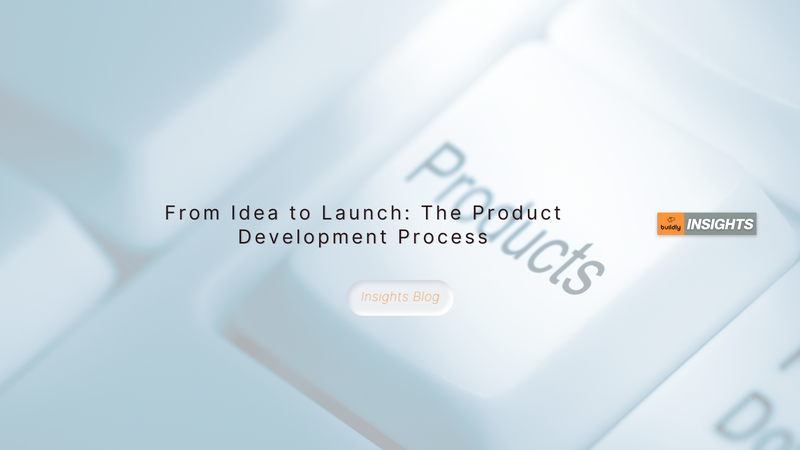From Idea to Launch: The Product Development Process

- admin
- April 27, 2023
The process of creating a product can be challenging and expensive in terms of both time and resources. The product development process can involve numerous steps and participants, each with specific roles and responsibilities, from ideation to launch. We want to describe the concept of the product development process along with the best practices for each stage in general terms in this article.
First stage: Ideation.
Ideation, which is the first stage of the product development process, entails coming up with concepts for brand-new products or ways to improve current ones. The customers, marketing team, and product managers are the main players at this point. Finding market inefficiencies and customer pain points that can be addressed by a new product is the responsibility of the product managers. Customers offer feedback on current products and suggestions for new ones, while the marketing team offers useful insights into customer needs and preferences. The best methods for idea generation include market research, customer feedback analysis, brainstorming sessions, and prototyping.
Phase 2: Conceptualization.
The ideation stage produces ideas, which are then refined into practical concepts. At this point, product designers, engineers, and prototyping experts are the key players. While engineers develop the product's technical specifications, product designers are in charge of creating the product's visual and user interface designs. Physical prototypes of the product are made by prototyping specialists and can be tested and evaluated. The best practices for concept development include developing prototypes, conducting user testing, and fine-tuning product specifications.
Product Design is the third stage.
Using the concepts created in the previous stage as a foundation, the product design stage involves developing intricate designs and specifications for the product. Designers of the products, engineers, and experts in manufacturing are the key players at this point. While the engineers polish the technical specifications, the product designers develop intricate visual designs and user interface specifications. The manufacturing Experts offer information on the product's manufacturing process, including materials, production costs, and schedules. The best practices for product design involve producing thorough design documentation, carrying out design evaluations, and enhancing product specifications.
Product Development is stage four.
Producing a physical version of the product design so it can be tested and assessed is known as product development. Engineers, prototyping experts, and manufacturing experts are the key players at this point. The product's hardware and software components are developed by engineers, and working prototypes are built by prototyping experts. The manufacturing experts offer insights into the production process, including quality control and testing procedures. Building functional prototypes, carrying out rigorous testing and quality control, and fine-tuning product specifications are among the best practices for product development.
Product Launch is the fifth stage.
The process of bringing a product to market is known as product launch, which occurs at the end of the development process. The marketing team, sales team, and customer support team are the major players at this point. A launch strategy is developed by the marketing department and includes marketing collateral, public relations initiatives, and launch occasions. The sales team is in charge of marketing the product, and the customer support team helps and supports customers. Developing a thorough launch strategy, educating the sales and customer support teams, and keeping track of customer feedback are all examples of best practices for product launches.
In conclusion, the process of creating a new product is intricate and multifaceted, involving numerous actors and stages. Product development teams can produce successful products that satisfy customer needs and preferences by adhering to best practices for each stage, including conducting market research, developing thorough design documents, building prototypes, carrying out rigorous testing and quality control, and developing a thorough launch strategy.

